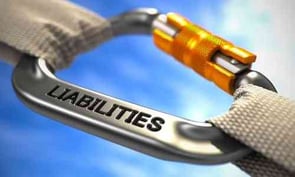Your Attachment, My Liability: The Burden of the Utility Pole Owner
 For pole owners, attachers are partners: entities that rely on mutual agreement to operate together in one space. However, sometimes things go wrong in the relationship, creating liability for pole owners that were likely never intended.
For pole owners, attachers are partners: entities that rely on mutual agreement to operate together in one space. However, sometimes things go wrong in the relationship, creating liability for pole owners that were likely never intended.
When things start heading south, it generally begins with the process. Typically, an attacher is required to permit to attach to a company’s pole. When they do that, the pole owner will be required to accept the permit for the attaching company to hook on. Seems clear-cut enough, right? Sometimes attachers neglect to submit the permit in the first place. In other cases, a permit may languish with owners in a lengthy process before being approved. These oversights increase the risk of making engineering mistakes, overtaxing poles, and compromising the safety of technicians and the public. All of those things mean increased liability for the pole owner that stems from a few common problems:
Overloaded Poles
Poles are meant to only hold so much equipment weight. If an attacher does not submit a permit, then the pole owner does not get the opportunity to verify whether the pole can handle the new attachment or not. Sometimes poles will need to be balanced, requiring equipment be placed in a specific spot. Sometimes one more attachment will mean the entire pole should be switched out for a larger one. If an attacher does not ask, the pole owner will not know until a utility pole inspection is started, and the result could be a toppled or broken pole—an outcome that is detrimental to both owner and attacher.
Space Issues
The NESC has specific spacing and clearance requirements designed for the safety of technicians and the public:
• 40 inches between electric attachments and communication attachments at the pole
• 30 inches between effectively grounded electric attachments and communication attachments at the pole
• 24 inches of climbing space
It is not the easiest measurement or math problem to do in the field, so an unpermitted attacher in a hurry to get on the pole and get out of the area may not be as diligent as they could be to ensure the NESC's guidelines are satisfied. Violations are costly, and utility pole inspection is not an everyday procedure, so it may be awhile before potentially dangerous situations are uncovered.
Unregulated Work
If a permit is submitted and approved, this puts into motion a chain of events that ensures attachers are aware of their responsibilities and pole owners are aware that work is being done on their assets. This gives owners the opportunity to review construction once it is complete to ensure the quality of work is good and gives attachers a chance to fix any issues that may arise. Without these safety checks in place, it is easy to see how sub-standard, violation producing, and even potentially dangerous work could happen, creating additional liability for pole owners.
This is a story of liability, but also of missed opportunity.
When a permit to attach is either not issued or approved, an opportunity is missed. Pole owners miss the chance to review how and where an attachment is placed on a pole. Attachers miss a double-check from the pole owner to ensure construction is completed safely and in absence of violations. Everyone misses a chance to start a process right and finish well for the benefit of continued service and safety for technicians and the public.
And that is a loss no pole owner wants to bear.
